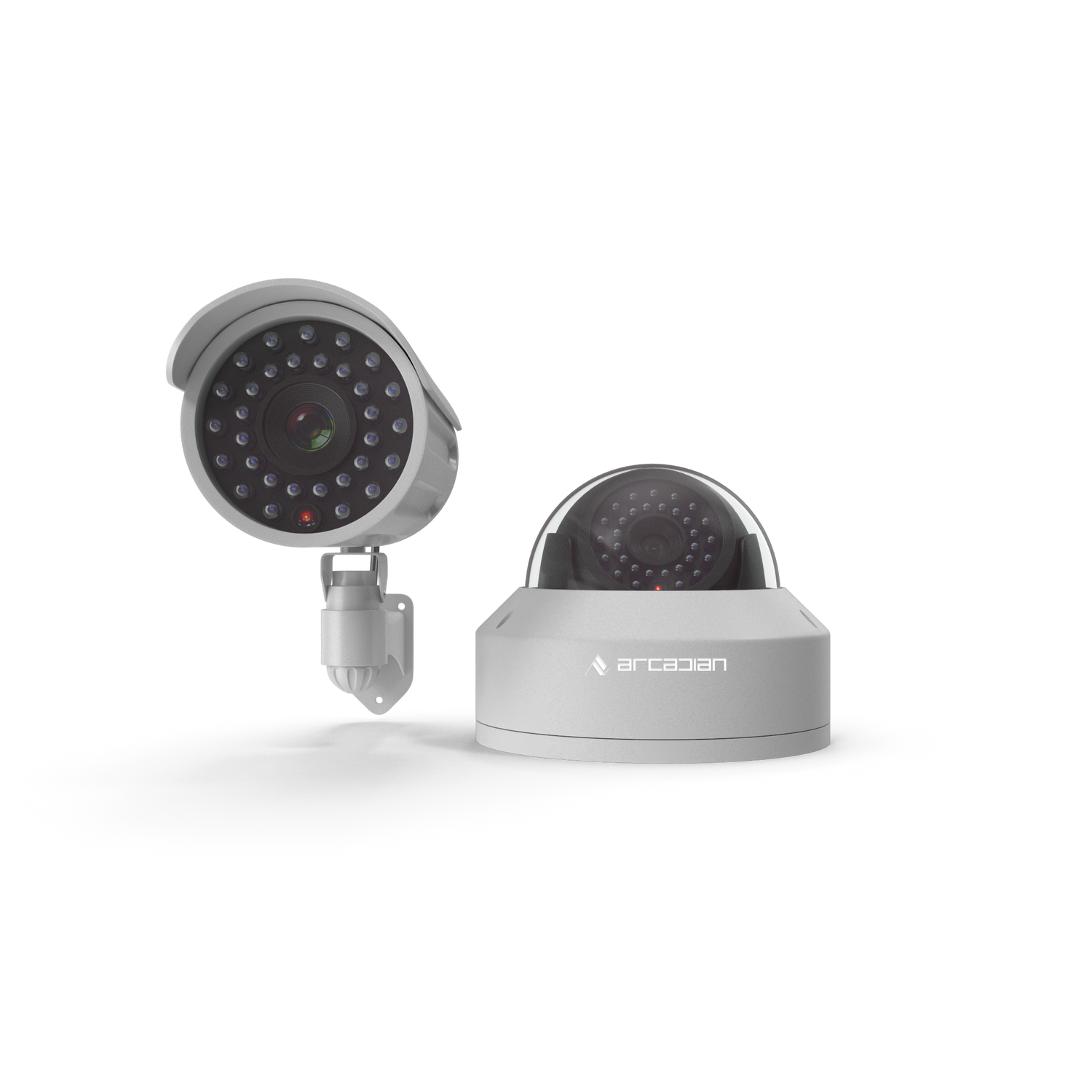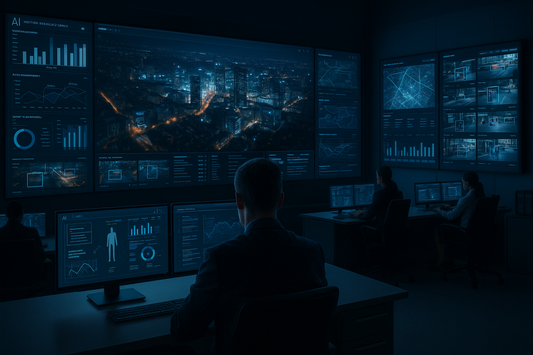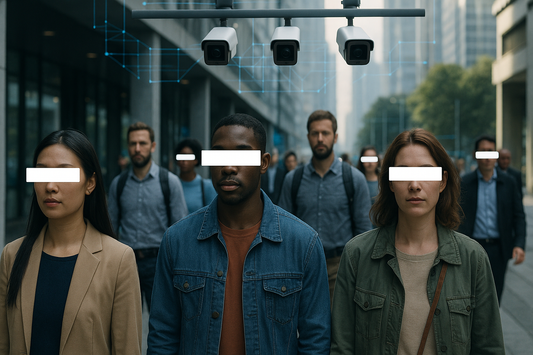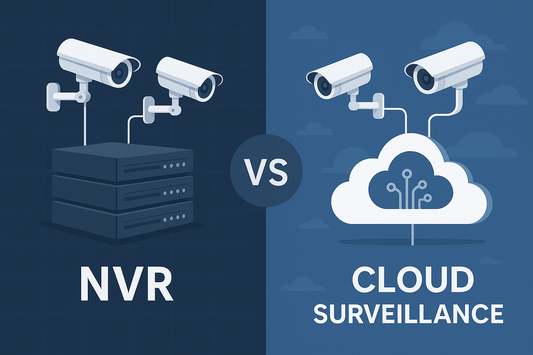The Cyber Threat No One Talks About: Securing Your Surveillance System
Most businesses think of cameras as passive observers. But when hackers breach them through outdated firmware or backdoor exploits, your entire network could be at risk. This post exposes the hidden cyber threats inside modern surveillance systems and shows how to secure them with automation, AI, and zero-trust architecture.
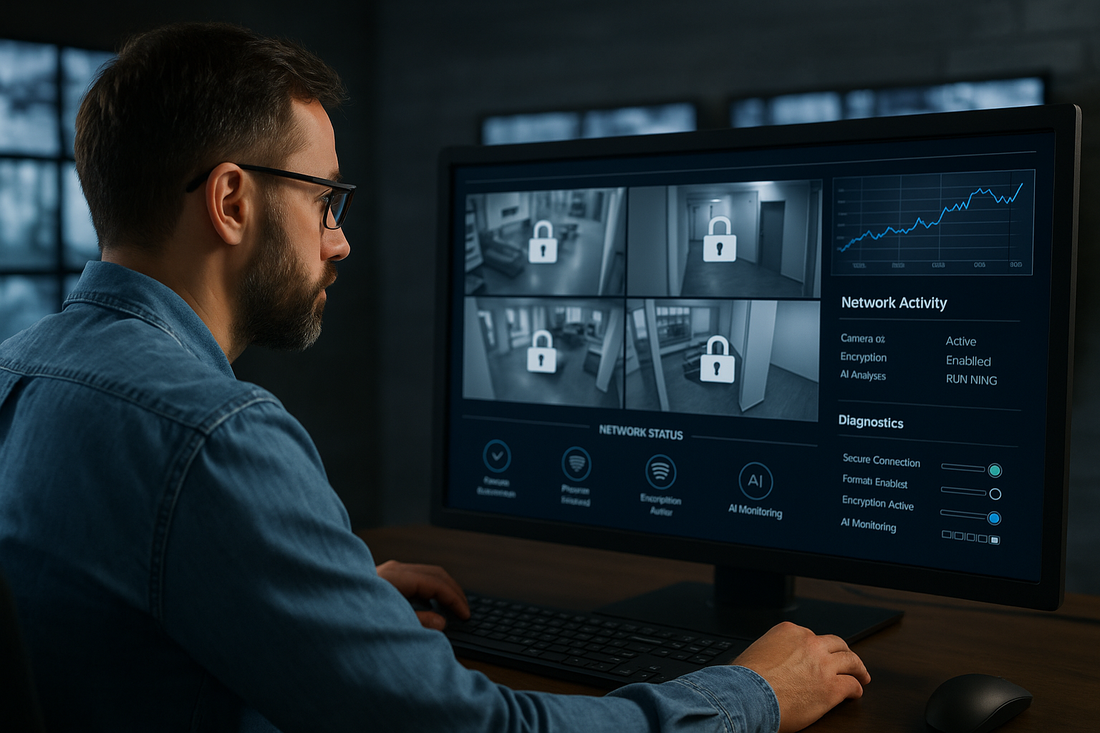
- Introduction
- Key Takeaways (TL;DR)
- Why Surveillance Systems Are a Cybersecurity Blind Spot
- Anatomy of a Surveillance Hack
- Zero-Trust Security for Surveillance: A New Baseline
- The Ransomware Threat Inside Camera Networks
- Automation and AI: The Missing Shield
- What to Ask Your Camera Vendor (And Why Most Fail)
- ArcadianAI’s Approach: Built for Cyber Defense
- FAQs
- Conclusion & Call to Action
Introduction
In a world obsessed with visibility, video surveillance has become the cornerstone of modern business and public safety. From retail stores and schools to banks and warehouses, cameras are everywhere. But while most attention goes to privacy laws, AI analytics, or video quality, there’s a darker, rarely discussed threat: surveillance systems as a cyber attack vector.
It’s not just about watching criminals—your cameras could be helping them.
Hackers are increasingly targeting security infrastructure itself, exploiting backdoors in firmware, launching ransomware attacks through NVRs, and even using cameras to pivot into corporate networks. In 2024, over 22% of ransomware attacks involved surveillance equipment as either a direct target or an access point, according to IBM X-Force.
And yet, most organizations still treat camera systems like static, offline appliances.
This post is your wake-up call. We’ll break down the cyber risks no one talks about, explain how firmware vulnerabilities and misconfigured systems create ticking time bombs, and provide a roadmap to securing your surveillance infrastructure with zero-trust principles and intelligent automation.
Key Takeaways (TL;DR)
-
Surveillance cameras are frequent entry points for hackers due to outdated firmware and poor network isolation.
-
Ransomware gangs target NVRs, DVRs, and VMS platforms—crippling operations and demanding ransoms to restore access.
-
Zero-trust architecture and AI-based behavioral analytics are essential for next-gen camera security.
-
Vendors selling “AI cloud surveillance” without endpoint security are exposing businesses to silent cyber threats.
Why Surveillance Systems Are a Cybersecurity Blind Spot
The Illusion of Isolation
Most business owners believe their surveillance systems are separate from critical IT infrastructure. After all, they’re "just cameras," right?
Wrong.
Modern IP cameras are mini computers—running embedded Linux or RTOS, communicating over TCP/IP, and often exposed to the internet. Many come with hardcoded credentials, insecure web interfaces, and unpatched firmware dating back years.
A single hacked camera can offer:
-
Internal network access via VLAN misconfiguration
-
Admin credentials leaked via weak protocols
-
Surveillance blackout through system bricking
-
Pivot opportunities into POS systems, customer data, and more
And the worst part? Nobody notices. Unlike typical endpoints, surveillance cameras often sit unmanaged, unmonitored, and unpatched.
Case Study – Verkada Breach (2021)
In one of the most famous camera hacks, activist group APT69420 (aka “Advanced Persistent Teen”) breached over 150,000 cameras from Verkada, gaining access to:
-
Tesla factories
-
Cloudflare offices
-
Police stations
-
Prisons
-
Hospitals
They didn’t use malware or complex exploits. They used a superadmin username and password leaked online.
That single login unlocked a cloud-based surveillance empire—including internal live feeds.

Anatomy of a Surveillance Hack
Step 1 – Discovery
Attackers scan for open ports (e.g., port 554 for RTSP) using tools like Shodan or Masscan. Once they find exposed cameras or NVRs, they fingerprint the firmware to identify vulnerable models.
Step 2 – Exploitation
Common vulnerabilities include:
-
Default credentials (e.g., admin:12345)
-
Open Telnet/SSH access
-
Unauthenticated remote configuration APIs
-
Buffer overflows in web interfaces
-
CVEs with PoC exploits (e.g., Hikvision CVE-2021-36260)
Many brands—Hikvision, Dahua, Uniview, and even Nest—have had major firmware vulnerabilities in the last 5 years.
Step 3 – Persistence
Hackers install:
-
Malware (e.g., Mirai botnet variants)
-
Reverse shells for remote control
-
Ransomware that encrypts stored footage
-
Proxies to hide traffic or pivot into the wider network
Step 4 – Extortion or Espionage
Once inside, attackers might:
-
Demand ransom to unlock systems
-
Steal footage for blackmail or industrial espionage
-
Use footage in deepfake or impersonation schemes
-
Sell access on the dark web to cybercriminal syndicates
Zero-Trust Security for Surveillance: A New Baseline
Traditional models assumed perimeter-based defense. But once breached, the attacker had full access.
Zero-trust flips the model.
With zero-trust surveillance:
-
Every camera must authenticate its traffic.
-
No camera can talk to others unless explicitly allowed.
-
Monitoring tools verify behavior continuously—not just at login.
Key Principles for Zero-Trust Surveillance Architecture
-
Least privilege access:
Limit camera access to only required services. -
Micro-segmentation:
Cameras should exist in separate VLANs or containers from main networks. -
Multi-factor authentication (MFA):
Required for all admin-level camera/VMS access. -
Behavioral anomaly detection:
Use AI to detect unusual access times, packet flows, or camera reboots. -
Encrypted storage & transmission:
All footage and metadata should be encrypted in transit (TLS 1.3) and at rest (AES-256).
The Ransomware Threat Inside Camera Networks
Real Cases, Real Losses
In 2023, a large logistics company in Texas had its entire VMS and NVR system encrypted by LockBit 3.0. The attackers:
-
Disabled all on-prem storage
-
Locked access to live camera feeds
-
Demanded $500,000 in Bitcoin
The company lost three days of warehouse operations—costing $2.4 million in delays and penalties.
They paid.
This was not a unique case. Over 200 known ransomware cases in 2023 involved surveillance systems as either:
-
The target
-
The access vector
-
The ransom leverage (i.e., threatening to leak footage)
Automation and AI: The Missing Shield
Automation isn’t just a convenience—it’s critical protection.
Modern surveillance systems need automated patching, health checks, and anomaly detection powered by AI.
AI-Driven Surveillance Security Includes:
-
Firmware integrity monitoring
Alerting when firmware hashes change unexpectedly. -
Unusual pattern detection
AI can flag odd traffic volumes, nighttime admin logins, or unauthorized IPs. -
Autonomous threat response
Systems like ArcadianAI’s Ranger can auto-quarantine devices or rotate credentials upon suspicious activity. -
Global threat intelligence integration
Platforms should connect to threat feeds (like MISP, AlienVault OTX) to receive updates on known exploits affecting camera vendors.
What to Ask Your Camera Vendor (And Why Most Fail)
Before you buy or install a camera or VMS system, ask the vendor:
-
Is your firmware signed and encrypted?
-
How frequently do you push security patches?
-
Is your cloud backend zero-trust compliant?
-
Do you offer MFA and role-based access?
-
What is your ransomware recovery protocol?
-
Are you NDAA compliant?
If they don’t have clear answers, they’re exposing you.
Common Red Flags:
| Red Flag | Risk |
|---|---|
| No firmware update policy | Easily exploited old vulnerabilities |
| No VLAN or network config support | Lateral movement risk |
| No anomaly detection or logging | Blind to breaches |
| Generic/default login after install | Credential stuffing danger |
| Closed-source or China-hosted cloud | Regulatory & espionage concerns |
ArcadianAI’s Approach: Built for Cyber Defense
ArcadianAI isn't just an AI-powered surveillance platform—it’s also cyber-resilient by design.
Here’s how we secure every layer:
-
Firmware Validation: All connected devices are fingerprinted and monitored. Suspicious firmware triggers alerts.
-
Zero-Trust Cloud Infrastructure: Built on AWS with microservices, no device can access data it shouldn’t.
-
Ranger AI Threat Detection: Monitors network and device behavior—flagging suspicious events before they escalate.
-
No NVR Needed: Eliminates the attack surface of traditional storage hubs.
-
Encrypted by Default: TLS 1.3 and AES-256 end-to-end.
And because it’s camera-agnostic, ArcadianAI can overlay this protection on almost any brand—without ripping out your existing system.
FAQs
Q: Can a hacked camera see everything I’m doing?
Yes. Beyond just footage, many cameras include microphones and PTZ controls. Some even record keyboard strokes through screen reflections.
Q: Do consumer systems like Ring and Nest face the same risks?
Yes, and sometimes more—because they rely on centralized cloud servers with limited user access to logs, firmware, or advanced network controls.
Q: Is an air-gapped surveillance system safe?
Only to a degree. If a camera or NVR is physically connected to any other system, the gap is compromised. Even USB drives can carry malware.
Conclusion & Call to Action
Most people don’t think of cameras as computers—but that’s exactly what they are.
And like any endpoint, they can be exploited, bricked, or weaponized.
Securing your surveillance system isn’t optional anymore. If your cameras can see everything, then so can the hackers—unless you lock them down.
This is not about fear. It’s about foresight.
It’s time to modernize.
It’s time to move beyond motion detection and into a world where AI not only watches, but protects.
ArcadianAI was built for this moment.
Connect your existing cameras, and let Ranger handle the rest—from real-time alerts to cyber-resilient infrastructure.

Security is like insurance—until you need it, you don’t think about it.
But when something goes wrong? Break-ins, theft, liability claims—suddenly, it’s all you think about.
ArcadianAI upgrades your security to the AI era—no new hardware, no sky-high costs, just smart protection that works.
→ Stop security incidents before they happen
→ Cut security costs without cutting corners
→ Run your business without the worry
Because the best security isn’t reactive—it’s proactive.
